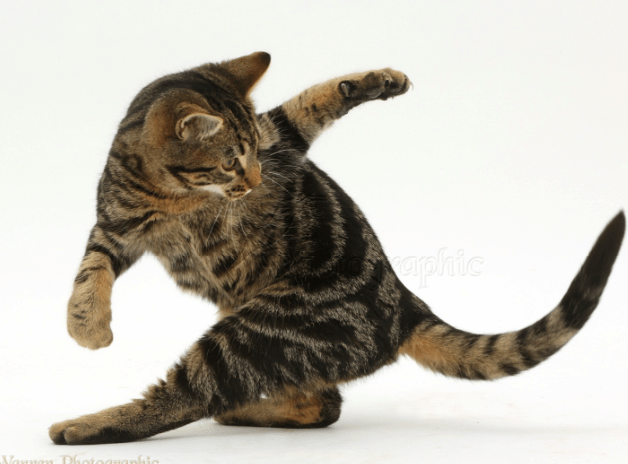Cats’ tails are amazing; they make cats look more elegant. The way they swish and flick that tail, such unmatched grace. Cats have tails for so many functions. Primarily they use their tail to keep their balance. Oh, and did you notice how cats’ tails seem to have a life of its own? Well, I’m guessing the next question that you have in mind would be why do cats chase their tails?

I mean, if it means something to them, why chase it as if it is something to hunt for? How about we start chasing the next paragraphs and find out!
1. Playtime!
For cats, their tails could be another playmate. Because their tails move differently depending on their mood, they get stimulated by it. Their tails can move from slow to quick movements, in almost any direction. Cats are thrilled by this, seeing their tails as some playing with interactive cat toys that moves on its own. A cat is a cat, they will always attempt to pin it down, grab it, paw at it or even bite it. Yes, even if it is their own.
2. Mood meter
When a cat becomes over-stimulated, their sense tends to become hypersensitive as well. They are able to hear, feel, and see almost any movement. And that includes movement from their tail. Sometimes the over-stimulation almost leads to aggressive behaviors and could result in intense movements and reactions just to catch their own tails.
3. Mistaken identity
Some cats may forget that their tails are part of their body and may look at it as if its prey that they have to catch. Some cats get annoyed by its tail depending on its mood and the movement of their tail that corresponds to that mood. You will be amused to see your cat have some sort of a wrestling match ala UFC style with their tails. On some days, they would lick it a lot and even groom it as if it is another cat.
4. Instinct
Cats are hardwired to chase and hunt. It is instinct for them to do so. Generations of cats before them have done so as well. Their tails only happen to be a convenient target to practice and test their hunting skills.
5. Just because it is a moving target – it’s probably alive!
Cats are highly triggered and attracted to movement. Their tail that moves a lot is not an exception. To cats, movement means life, and life means prey, consequently means food as well. They will try with all their might to catch whatever is moving because they are wired to chase almost anything that moves. This is a trait that has been passed down upon generations of cats that makes them great hunters!
6. Perhaps they’re bored
The next time you ask “why do cats chase their tail”, a possible explanation is that your cat could be feeling a little bit bored and wants to find something worthwhile to do.
7. A possible sickness
Too much tail chasing could mean something else more than playing and mistaken identities. Tail chasing in cats commonly occur in a certain age range, anything beyond that could be an indication of a behavioral concern. Here are possible medical conditions your cat may have:
- Skin allergy or allergies with food – it could get itchy and unbearable, that’s why they are trying to chase down their tails
- Impacted anal glands – can cause quite a discomfort especially in the behind, they may want to get rid of it, not their tails!
- Worms – can be bothersome especially if there is that wriggling sensation in their butts. Watch out for hanging worms (usually tapeworms) in your cat’s behind
- Fleas, ticks and parasite infestation – can give a cat one hell of an itchy nightmare. Your cat may go into a frenzy because of too much of these creepy-crawlies
- Feline hyperesthesia or feline psychogenic alopecia – Let’s discuss this one in a more detailed manner. This complicated-sounding term is likened to a human’s obsessive-compulsive disorder. Your cat may run around, and chase at literally anything that moves – and that includes their tails and even you. Their pupils will dilate and become hyperactive and aggressive toward its tail. It can even become overly fixed in chasing it down.
